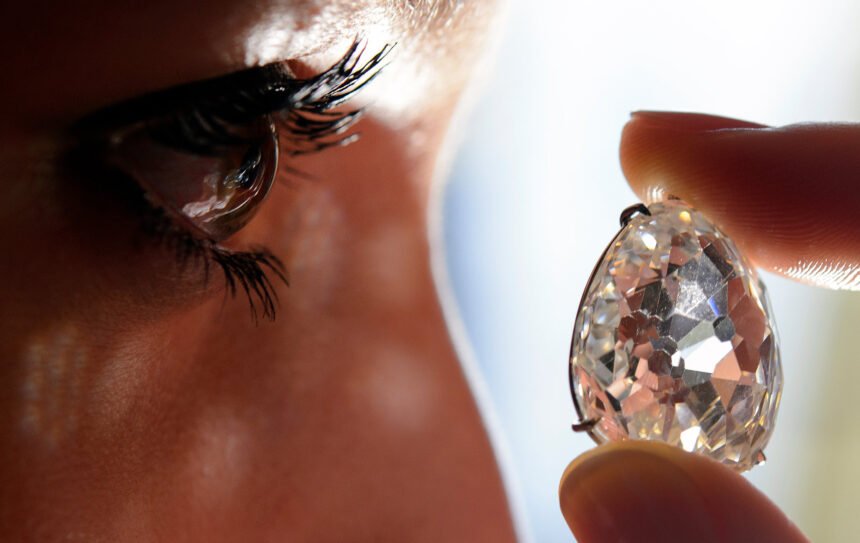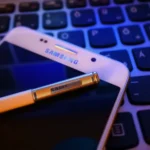Introduction to diamond imperfections
Welcome to the fascinating world of diamonds, where imperfections can tell a unique story. Diamonds may be known for their brilliance and clarity, but it’s the imperfections that add character and intrigue to these precious gemstones. In this article, we will delve into the art of finding imperfection in a diamond – from understanding what makes a diamond imperfect to tips on identifying these flaws. So, grab your magnifying glass as we embark on an adventure to uncover the hidden beauty within imperfect diamonds! imperfection in a diamond nyt
What makes a diamond imperfect?
Diamond imperfections can stem from various factors, causing unique characteristics that set each stone apart. One common imperfection is known as inclusions, which are internal flaws within the diamond. These may appear as tiny crystals, feathers, or other minerals trapped inside the gem during its formation.
Another type of imperfection is called blemishes, which are external flaws on the surface of the diamond. These can include scratches, chips, or pits that affect the clarity and overall appearance of the stone.
The size and visibility of these imperfections can vary greatly among diamonds and impact their value accordingly. While some imperfections may be more noticeable to the naked eye than others, they all contribute to the individuality and beauty of each diamond.
Types of Diamond Imperfections
When it comes to diamond imperfections, there are various types that can affect the overall appearance and value of a diamond. One common type of imperfection is known as inclusions, which are internal flaws within the diamond. These inclusions can include tiny crystals, feathers, or clouds that may be visible under magnification.
Another type of imperfection is blemishes, which are external flaws on the surface of the diamond. Blemishes can take the form of scratches, nicks, or pits that impact how light interacts with the diamond. These imperfections can vary in size and severity, affecting the clarity and brilliance of the stone.
It’s important to note that not all imperfections are easily visible to the naked eye; some may require professional grading to accurately assess their impact on a diamond’s quality. Understanding these different types of imperfections can help you make an informed decision when selecting a diamond for purchase or appraisal.
How to Identify Imperfections in Diamonds
When it comes to identifying imperfections in diamonds, a keen eye is essential. One common type of imperfection is known as “inclusions,” which are internal flaws within the diamond. These can appear as tiny crystals, feathers, or even clouds trapped inside the stone.
Another type of imperfection is called “blemishes,” which are external flaws on the surface of the diamond. These can include scratches, nicks, or pits that affect the diamond’s overall appearance.
To identify these imperfections, experts often use magnification tools like loupes or microscopes to closely examine the diamond’s clarity characteristics. By carefully inspecting each facet under proper lighting conditions, these imperfections become more apparent.
By understanding how to spot inclusions and blemishes in a diamond, you can make an informed decision when purchasing one for yourself or a loved one.
The Impact of Imperfections on Diamond Value
Imperfections in diamonds can significantly affect their overall value. The presence of flaws, such as inclusions or blemishes, can impact the diamond’s brilliance and clarity, diminishing its visual appeal. These imperfections may also affect the durability of the stone and could potentially lead to structural weaknesses over time.
Diamonds with fewer imperfections are generally considered more valuable due to their rarity and superior quality. In contrast, diamonds with noticeable flaws may be less desirable in the eyes of buyers and collectors. Gemologists carefully evaluate these imperfections using specialized tools to determine their severity and influence on the diamond’s worth.
It is important for consumers to understand how imperfections can influence the value of a diamond when making purchasing decisions. By educating themselves on different types of flaws and their implications, individuals can make informed choices that align with their preferences and budget constraints.
Tips for Finding Imperfections in a Diamond
When looking for imperfections in a diamond, start by examining the stone under good lighting. Natural light is best to catch any flaws that may be present. Use a loupe or magnifying glass with at least 10x magnification to get a closer look.
Rotate the diamond and observe it from different angles to spot any inclusions or blemishes. Imperfections are often easier to see when you view the diamond from various perspectives. Pay attention to areas like the table, crown, girdle, pavilion, and culet where imperfections tend to occur.
Take your time inspecting the diamond thoroughly before making a decision. Don’t rush through the process as finding imperfections requires patience and careful observation. If you’re unsure about what you’re seeing, don’t hesitate to seek advice from a professional gemologist or jeweler.
Remember that imperfections can vary in size and visibility, so trust your instincts when assessing their impact on the overall beauty of the diamond. By following these tips, you’ll be better equipped to identify imperfections and make an informed choice when selecting a diamond for purchase or appraisal.
Conclusion: The Beauty of Imperfect Diamonds
In the world of diamonds, imperfection doesn’t necessarily equate to inferiority. Imperfect diamonds have their own unique charm and character that sets them apart from flawless stones. Embracing the imperfections in a diamond can add depth and interest to its overall appearance.
When you look beyond the flawless façade, you may discover a beauty that is truly one-of-a-kind. The quirks and characteristics of imperfect diamonds tell a story of their formation deep within the earth over millions of years. These imperfections give each diamond its own identity and make it truly special.
So, next time you’re in search of a diamond, consider looking for imperfections rather than shunning them. You might just find that perfect imperfect gem that captures your heart with its individuality and allure. Remember, imperfection is not always something to hide – sometimes it’s what makes something truly beautiful.










